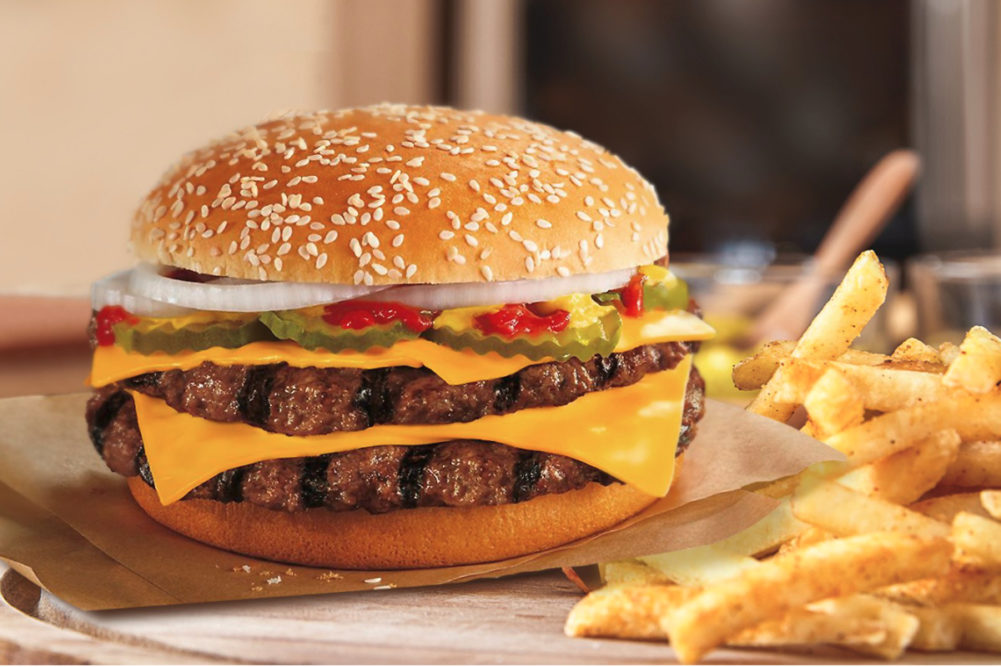TORONTO — Comparable sales fell for both Burger King, down 3.7%, and Tim Hortons, down 10%, in the first quarter ended March 31, but executives of parent company Restaurant Brands International, Inc. had optimistic data to offer in a May 1 earnings call.
Digital use and delivery are increasing amid the coronavirus (COVID-19) pandemic. Comparable sales in April improved from March lows.
“In mid-March, we saw a sharp decline in comparable sales across brands and regions coinciding with the global proliferation of COVID-19,” said José E. Cil, chief executive officer of Toronto-based Restaurant Brands International. “While many of the challenges remained in April and continue as we head into May, there is optimism and renewed confidence amongst our brand teams and restaurant owners as we've seen a strong improvement in comparable sales over the course of the month of April, low double-digit improvements for each brand in our home markets from the lowest levels we saw in late March.”
Joshua Kobza, chief operating officer of Restaurant Brands International, pointed to growth in delivery and digital sales.
“From a base of just a couple of hundred restaurants in North America on delivery two years ago, we now have well over 9,000 active restaurants across our three brands, with most offering delivery via our own digital platforms as well as multiple aggregators,” he said.
He added digital sales in home markets for the third week of April represented about 9% of total sales at Burger King, 15% of total sales at Popeyes and more than 30% of total sales at Tim Hortons.
Mr. Cil noted daypart changes. Before COVID-19, people followed routines like going to work or taking children to school, he said.
“Dayparts like breakfast and snacking that fit into these routines have seen a disproportionate decrease while lunch and dinner have shown more strength,” Mr. Cil said. “Also, whereas we would typically see sales pick up on Thursday and continue at a higher clip through the weekend, we now see stronger performance on weekdays, and while traffic has decreased, we've generally seen an increase in average check sizes due to more frequent group ordering, both in the drive-thru and on delivery.”
Burger King sales overall dipped 3% in the quarter to just shy of $5 billion. In the last two weeks of March comparable sales decreased by more than 30%, but the percentage decrease dropped under 20% by the end of April. Drive-thru sales for Burger King in the United States have been positive since the second week of April and now are up more than 15% year-over-year, Mr. Cil said.
“And on delivery, in the final weeks of the quarter, we accelerated the rollout to several hundred restaurants so that we now have over 5,000 restaurants offering the service, most via multiple delivery partners as well as the Burger King mobile app,” he said.
To help Burger King restaurant owners in the United States, cash advance on rebates were made immediately available up to $15,000 per restaurant.
Popeyes continued a hot streak that began with a chicken sandwich item last year. Comparable sales were up 26% in the first quarter. Total sales rose 32% to $955 million. In the last two weeks of March comparable sales were flat, but they returned to levels before COVID-19 by the end of April. Average order size and ticket have increased, especially in the dinner daypart because of orders for family meal bundles.
Total sales for Tim Hortons in the quarter fell 10% to $1.38 billion. In the last two weeks of March comparable sales decreased by more than 40%, but the percentage dropped under 40% by the end of April. The Tim Hortons chain has gone from 250 restaurants offering delivery to more than 1,000 in less than two months, Mr. Cil said.
Companywide, Restaurant Brands International had net income of $224 million, or 48¢ per share on the common stock, in the first quarter, which was down 9% from $246 million, or 53¢ per share, in the previous year’s first quarter. Total revenues of $1.23 billion were down 3.3% from $1.27 billion.
Across all brands, more than 95% of US restaurants are open, Mr. Cil said. About 85% of Tim Hortons in Canada are open.
About half the restaurants in Europe, the Middle East, Africa and Latin America were closed temporarily due to COVID-19 at the end of the first quarter. In China, less than 10% of restaurants remain closed, Mr. Cil said.
Total debt for Restaurant Brands International was $13.4 billion on March 31. Net debt, which is total debt less cash and cash equivalents, was $10.9 billion. Net leverage was 4.8x. The cash balance led the company draw down substantially all its $1 billion revolving credit facility in mid-March.






